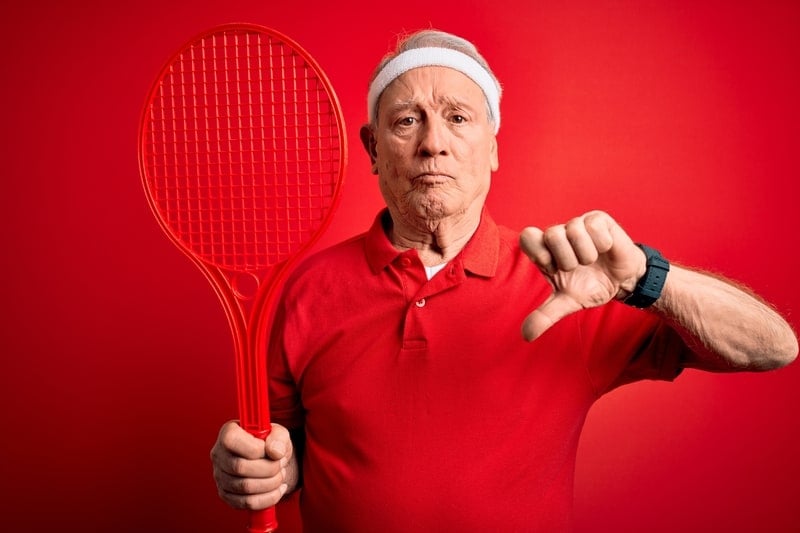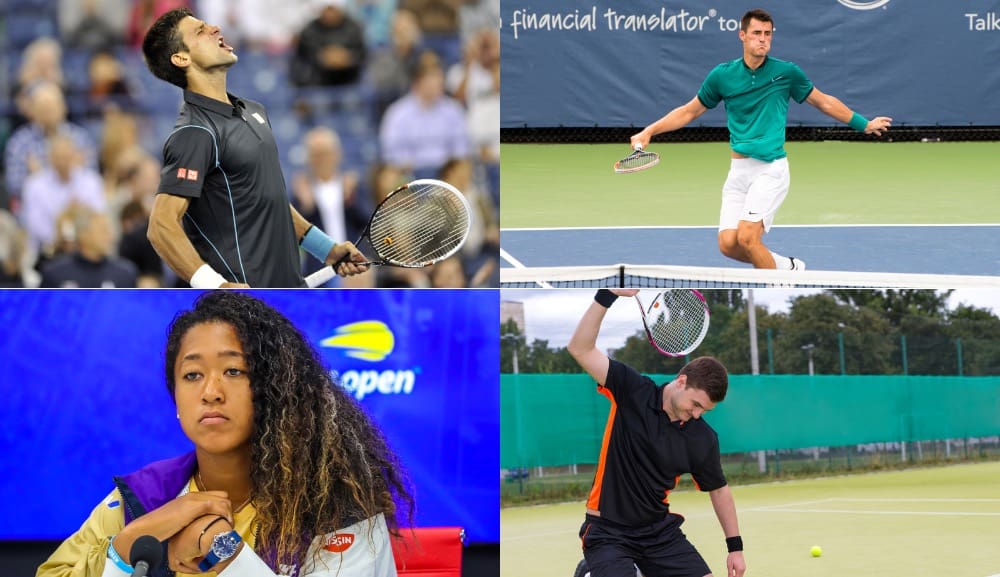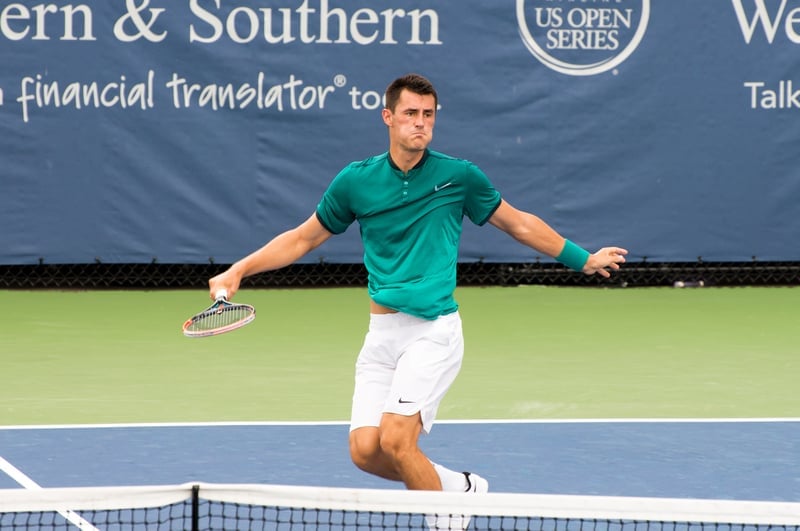

Relatively speaking, tennis is a sport that has very few code violations and penalties. There is not much controversy, especially with Hawkeye becoming so prevalent in today’s world of helping with close shots. However, code violations and penalties do happen from time to time in tennis.
What exactly causes these code violations and penalties? Understanding what to look for can go a long way towards figuring out exactly what is going on. There are some pretty stiff consequences if a person does not act as they should, so there usually is not too much controversy going along with the sport in general.
Table of Contents show
There are many different types of code violations in tennis, and some of them are very vague. Below is a breakdown of the most common code violations and what consequences it can lead to.
These are the most common types of code violations in tennis (Grand Slam events: 1998-2018)

This code violation is the most common in professional tennis right now. It is very easy for players who are frustrated to swing what is in their hand at the time, which is why the racquet often gets slammed, thrown around, kicked, and more.
If it is just one or two hits against the ground, umpires usually let it go. It is not until it gets out of hand, or a player makes a huge scene with the racquet abuse that they receive a warning or even a loss of point.
It would take a ton of racquet abuse for a player to be disqualified, as some players have had some pretty crazy temper tantrums while still being able to finish the match.
As one might expect, there are different levels of audible obscenities. A few magic words can lead to an automatic violation without getting any type of warning. It is also very easy for players to get disqualified if they go too far.
There is usually a protocol that umpires need to follow to not automatically throw out a player. Warnings, point penalties, and game penalties are all in play.
Tennis reacts more to these obscenities if TV cameras pick them up. After all, it hurts the sport’s image a bit, and they could receive a fine for on-air explicative.
Unsportsmanlike conduct is a bit of a catch-all option for a variety of violations. It can be directed towards an umpire, an opposing player, or anyone at the match, for that matter. Since the description is a bit vague, it might be the most controversial penalty or violation a player receives when playing.
The vast majority of players, do not have to worry about unsportsmanlike conduct. However, there will always be instances when an umpire needs to get everything under control. If the player receiving the violation still will not listen, the tournament referee can help make decisions as well.

There is a lot of overlap between audible obscenities, unsportsmanlike conduct, and verbal abuse. More often than not, a code violation is labeled as verbal abuse if an umpire is receiving a lot of complaints from a player. Maybe they are upset with the calls or feel like they are being targeted for one reason.
Certain triggers will escalate things a lot more than others, but verbal abuse usually starts with a warning. Umpires are not required to put up with a ton of abuse when they are out there on the court. Some get the reputation for having less tolerance than others.
Tennis has a long history of allowing no coaching whatsoever during a match. It is supposed to be a tennis match with one player going up against the other, and unlike most other sports, there is no coach to give advice.
That changed a few years ago to some degree, as the WTA now allows for coaching opportunities during a match. Still, it is only allowed during set times, and if the umpire catches a player receiving coaching at another time, they can face the consequences.
A lot of players will try to deny that they are receiving coaching when they are called out upon it, but that does not always work. As many people know, perhaps the most infamous controversy came at the 2018 US Open when Serena Williams received a violation for receiving illegal coaching during the final against Naomi Osaka.
A code violation that is becoming more and more enforced is time violations. This is a bit of a controversial call, which is why most umpires are giving players the benefit of the doubt. Not only is it new, and players are adjusting, but the official start of the clock in between points is argued a bit.
Time violations can also occur if a player takes too long of a break in between sets. It is ultimately up to the umpire’s discretion, but as long as it is close, players will usually get away with it. A lot of umpires will give off-the-record warnings to players before giving an official warning.

Another rarely used code violation that can result in a pretty hefty fine is failing to give the best effort on the court. This is up to the umpire’s discretion and only occurs during the most obvious circumstances.
There are many reasons why players must give their all when out on the court. Not only does it keep the competitive balance, but it helps to prevent the risk of match-fixing. The last thing the tennis world wants is any kind of rampant gambling scandal to break out.
Also, with so many players fighting for spots in each tournament, players must give great effort when they are actually playing to appease the fans.
Balls get a lot of abuse when players are frustrated during a match. Virtually every tennis player ever has hit the ball a little harder or slammed a ball in frustration. Umpires will let it go to a certain extent, but they will call a code violation if it gets out of hand.
The majority of players will take one warning and change the way they are approaching their frustration. If the ball goes out of the stadium or is directed at a player or umpire, there is a chance of getting an automatic disqualification. The ball might be relatively small and soft, but it could still do some damage when hit at high speed.
In the US Open 2020, perhaps the most shocking example of ball abuse led to a disqualification. Novak Djokovic, visibly upset, smashed a ball that ended up hitting someone calling lines. He was immediately disqualified from the tournament and lost a solid opportunity to win another major.
Tennis players usually let the umpire know exactly how they feel if they are frustrated with an audible obscenity. However, players will go with a much more subdued route on occasion by giving them a visible obscenity. Almost always, this is flipping the umpire off for one reason or another. Players might also flip off their opponent if they are having some disagreement with them.
The same rules apply as far as code violations are concerned with these obscenities. Players usually receive a warning at first, unless it is clearly visible and causing a major distraction. Umpires may jump to giving a point penalty right from the beginning if that is the case.

Every professional tennis player needs to have some availability to the press after a match. Failure to do so can result in a fine.
This is rarely in need of enforcing, since there are various ways players can meet requirements. However, the difference is that since this is during a match, any penalty comes in the way of a fine.
During the Roland Garros 2021, Naomi Osaka refused to participate in the mandatory post-match press conferences, which led to a hefty $15,000 fine.
Receiving a code violation or penalty in tennis might not be a player’s finest moment, but these rules are there for a reason.
Players must act a certain way to keep everything operating smoothly at each tournament. Failure to do so can seriously affect the way a match goes with penalties. It can also ultimately mess with a player’s wallet.
I'm Fred, the guy behind TennisPredict. Apart from writing here, I play tennis on a semi-professional level and coach upcoming talents.